The Four Practices?
Challenges for the Archaeology of the Screen
Erkki Huhtamo
A simple Google search of what a screen is defines it as “a fixed or movable upright partition used to divide a room, give shelter from draughts, heat, or light, or to provide concealment or privacy.” Nowadays, the idea of screens still remains the same – something that divides a space or provides privacy. From my perspective, I think the archaeology of the screen has modified our behaviour in more ways than we could have ever imagined.
In our society, it seems as though screens exist as a catalyst for certain social behaviours to take place. Our mobile phones are slowly becoming essential tools for surviving in public, they help us avoid unwanted conversations and uncomfortable eye contact. On our MRT trains, mobile phones are used as a tool for ignorance. “If you don’t see the old person you don’t have to give up your seat“. If this were to be the case, a pair of sunglasses too, can be seen as a screen. The darker the lenses the better, for some of the older generation ladies on the train. “If I can’t see you, you can’t see me“. Screens have evolved from something functional to becoming a tool that enables an escapist behaviour of sorts, providing us with the unsaid right to behave in a certain manner, or perhaps existing more as an excuse.
The Apple Smartwatch, for example, is a tool that on the surface, sounds like the perfect device. What better way than to compact all your mobile essentials into a portable and wearable device that humans have owned for centuries? Despite the benefits of convenience, the watch as an artefact is something that in my opinion, should be taken with more consideration. At a glance, any band worn on the wrist would be immediately associated to the telling of time. Over the years, we have developed a behaviour to occasionally check our wrist watches, an action which could be read in many ways – an indication of the need to leave, to rush to someplace or to excuse oneself. With the existence of the Apple Smartwatch, which pushes the boundaries of what the initial function of a watch is to more than what the artefact was intended to perform essentially, the behaviour that it enhances is one in which comes across as unpleasant and rude. A friend which owns one of these Apple Smartwatches constantly comes across as a busy person with the need to rush off or leave, appearing to have something more important at hand than the time that we were spending together. In actual fact, it was just a vibration or light up from the screen of the watch from a notification that he received.
Huhtamo’s concept of what a screen is begins by looking/peeping through an optical device, or through means in which reality is altered or alternatively created. Due to the increasingly digital nature of screens, it appears inevitable that it would eventually evolve into something that we exploit, to create an alternative reality and barrier for ourselves in the real world. Screens should be designed to suit existing human behaviour/needs and not be considered an interference in the activities of daily life.

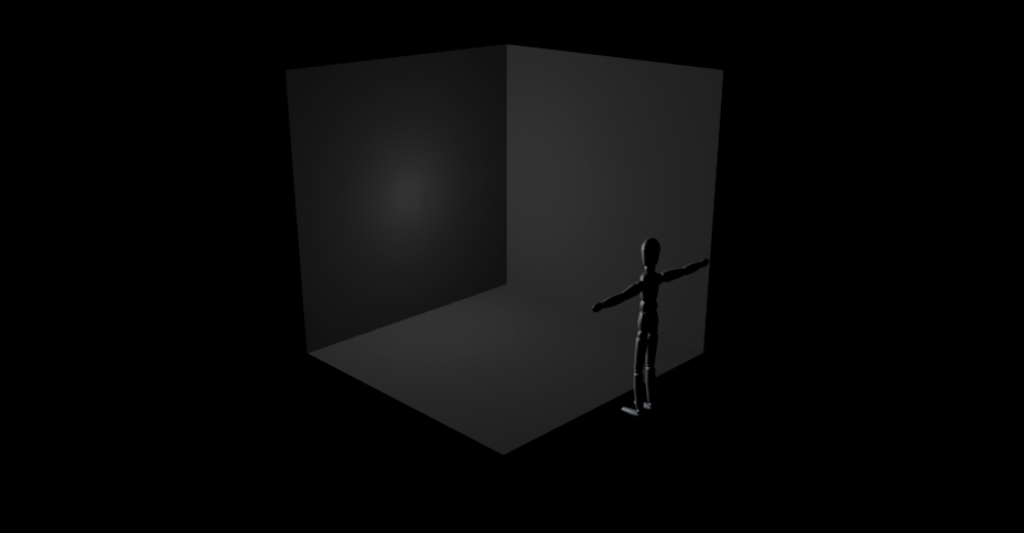
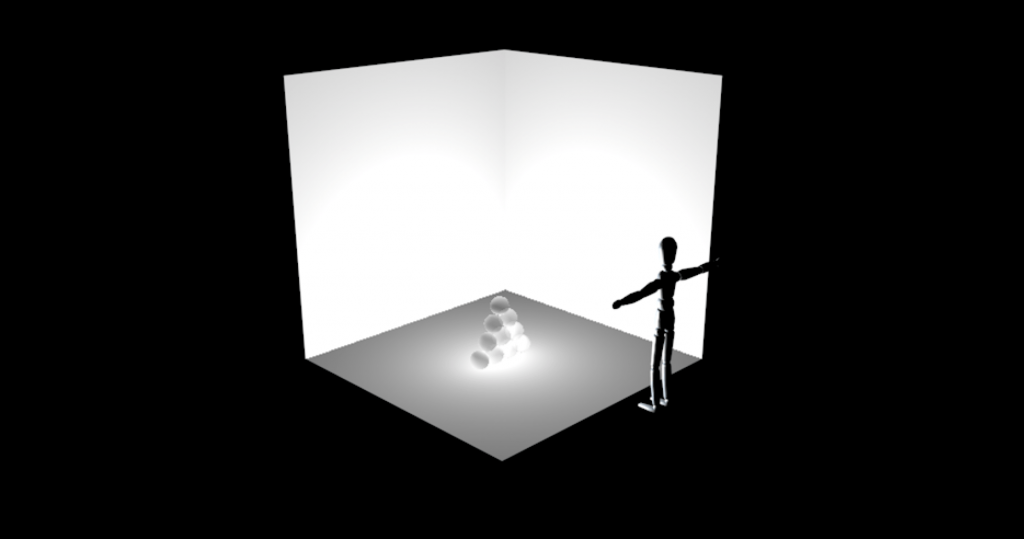
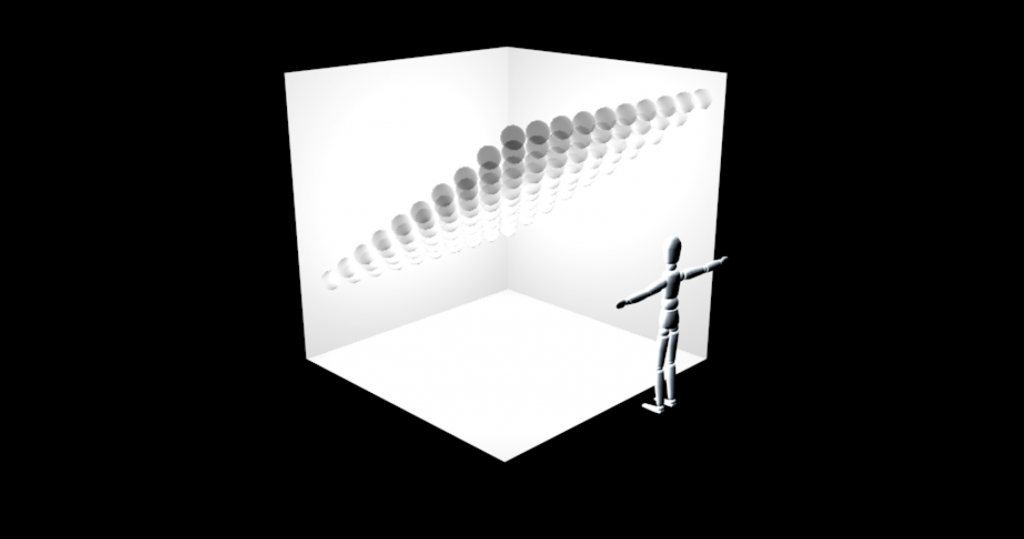
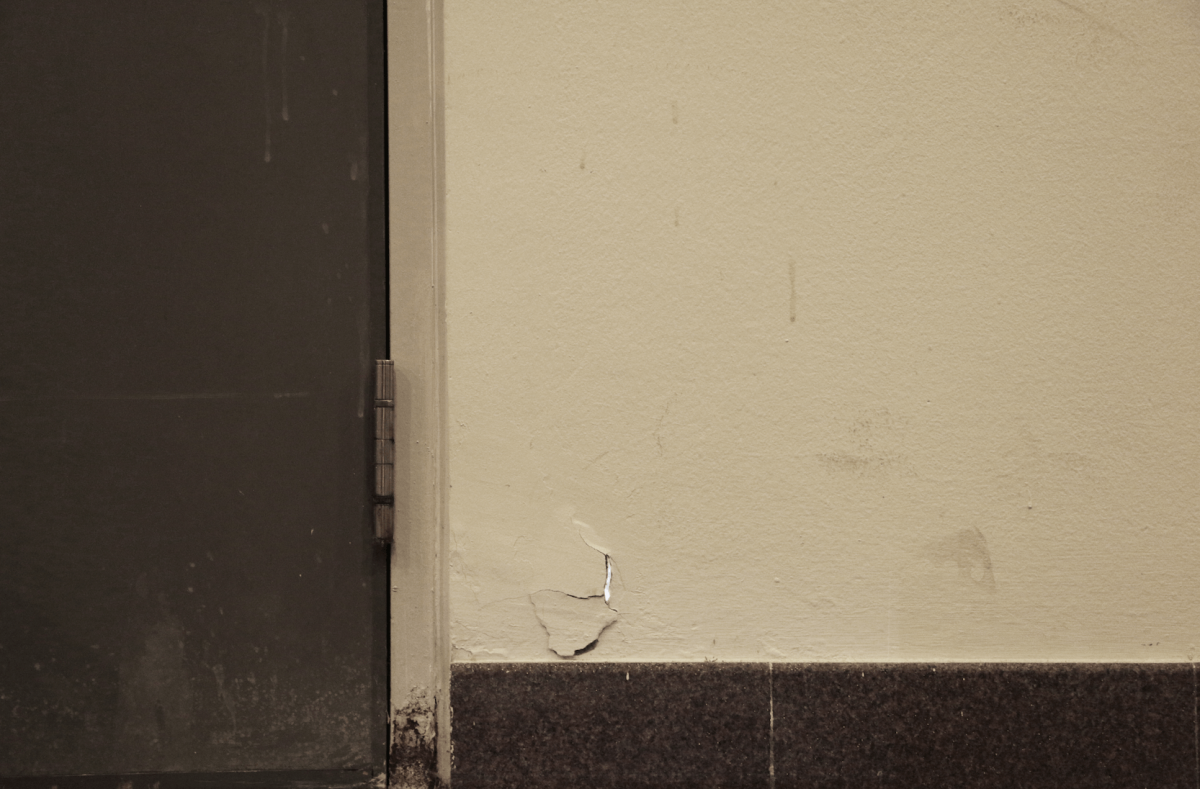
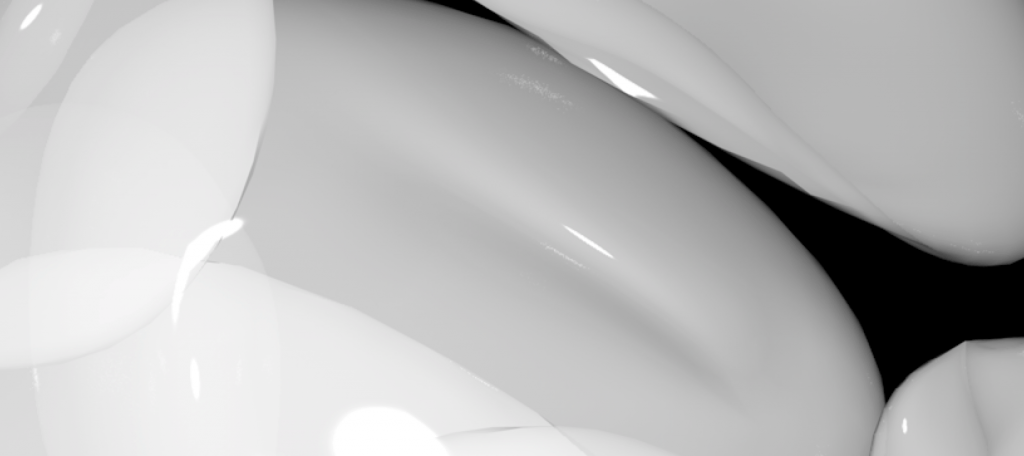
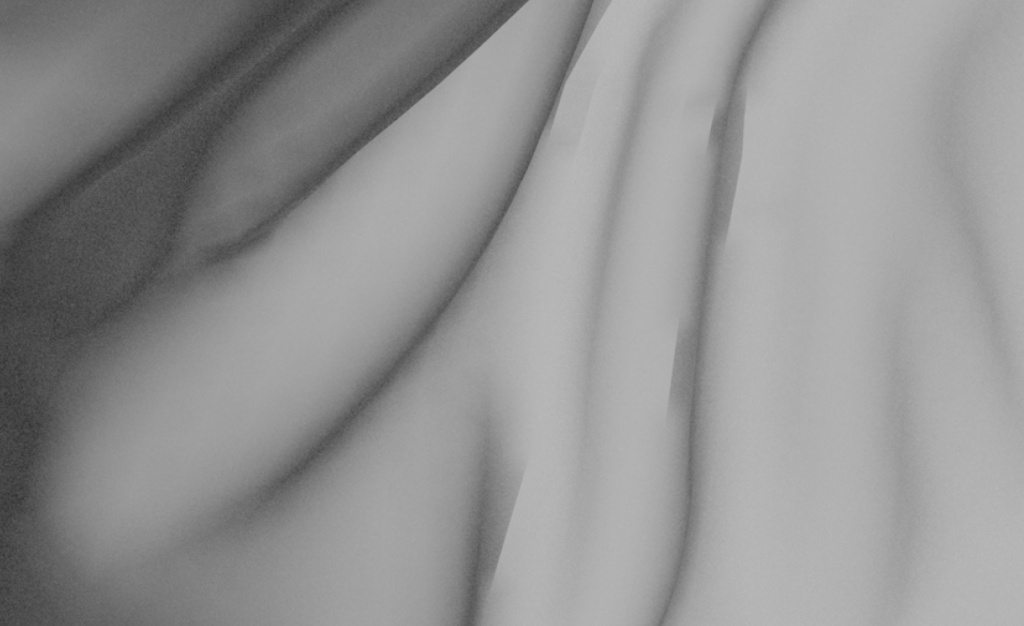
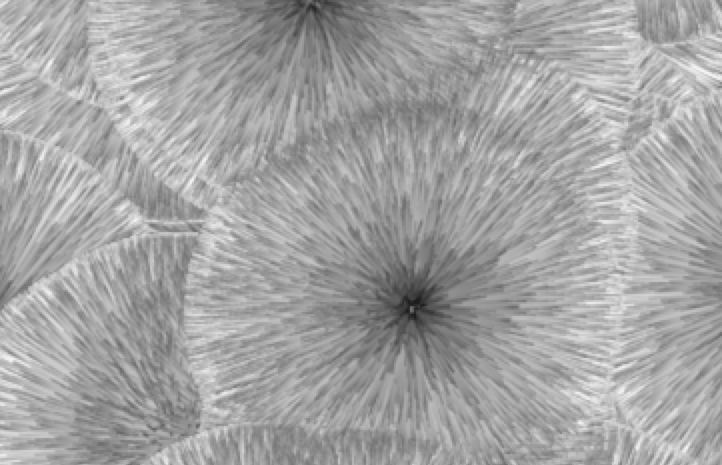
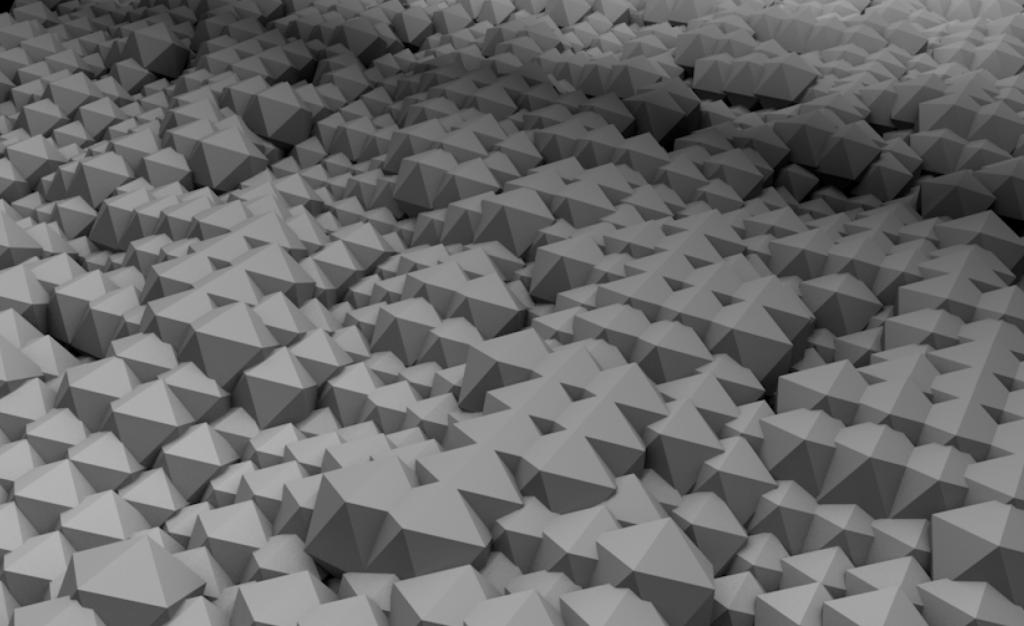 The abstract textures were created with Cinema 4D, a 3D modelling and motion graphic software. As I initially wanted to create textures that appeared as though they were emerging from the wall and towards the viewer, I need to use a powerful 3D modelling software and not After Effects. I have never had any prior experience dealing with C4D before, but I thought it would be a good opportunity to throw myself into the deep end and see how things go (with a lot of reliance on online tutorials of course).
The abstract textures were created with Cinema 4D, a 3D modelling and motion graphic software. As I initially wanted to create textures that appeared as though they were emerging from the wall and towards the viewer, I need to use a powerful 3D modelling software and not After Effects. I have never had any prior experience dealing with C4D before, but I thought it would be a good opportunity to throw myself into the deep end and see how things go (with a lot of reliance on online tutorials of course).

 Out of curiosity, I tried playing a video of the animations hidden behind the wall. It looked as though another huge crack had appeared on the wall, and looked like a gateway to another realm! I also realised that it was quite difficult to achieve the “3D” popping out effect due to irregularities of the surface and the crack, which made it really obvious that it was a projection.
Out of curiosity, I tried playing a video of the animations hidden behind the wall. It looked as though another huge crack had appeared on the wall, and looked like a gateway to another realm! I also realised that it was quite difficult to achieve the “3D” popping out effect due to irregularities of the surface and the crack, which made it really obvious that it was a projection.
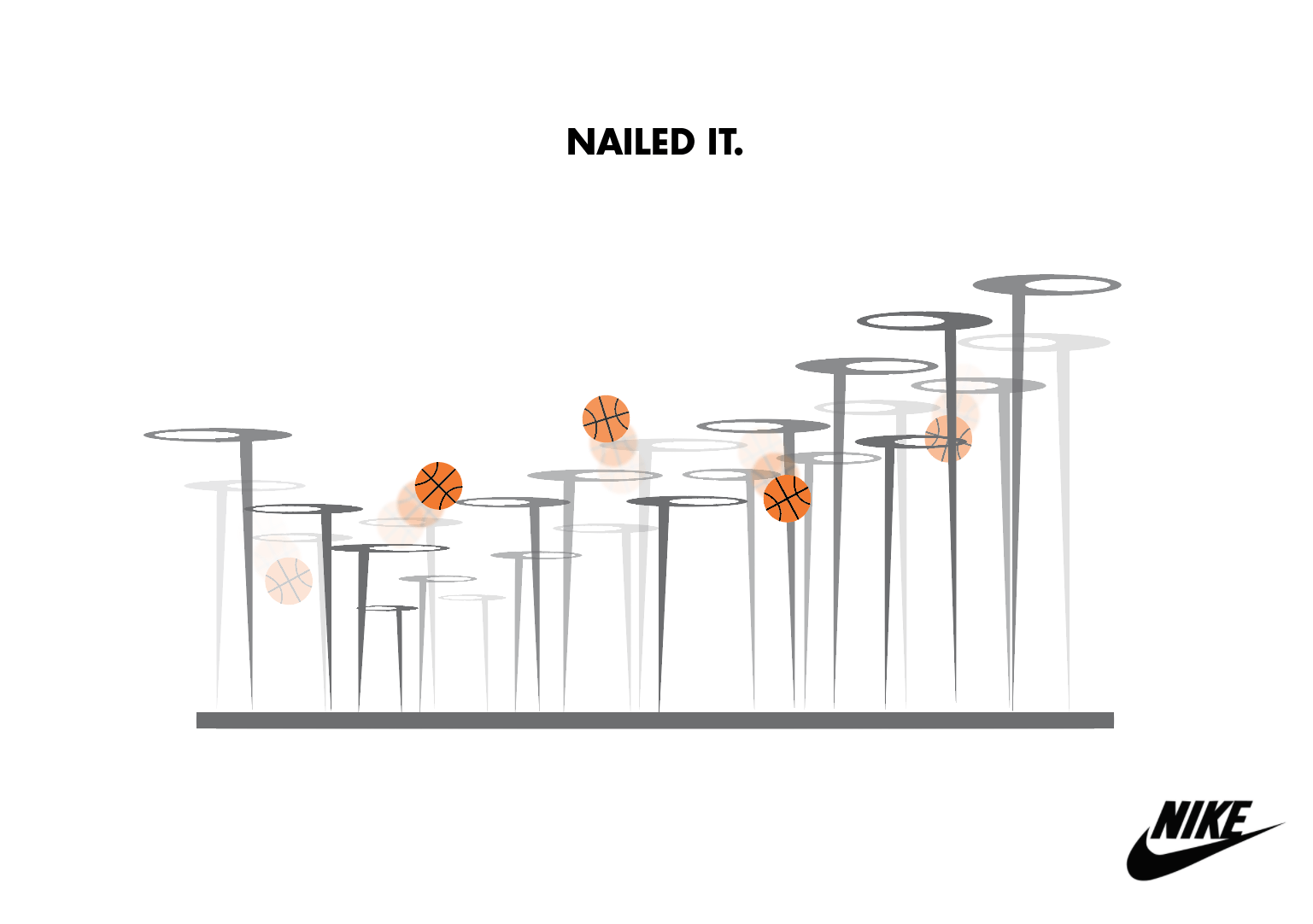 Nike. Nails. Graciousness.
Nike. Nails. Graciousness. 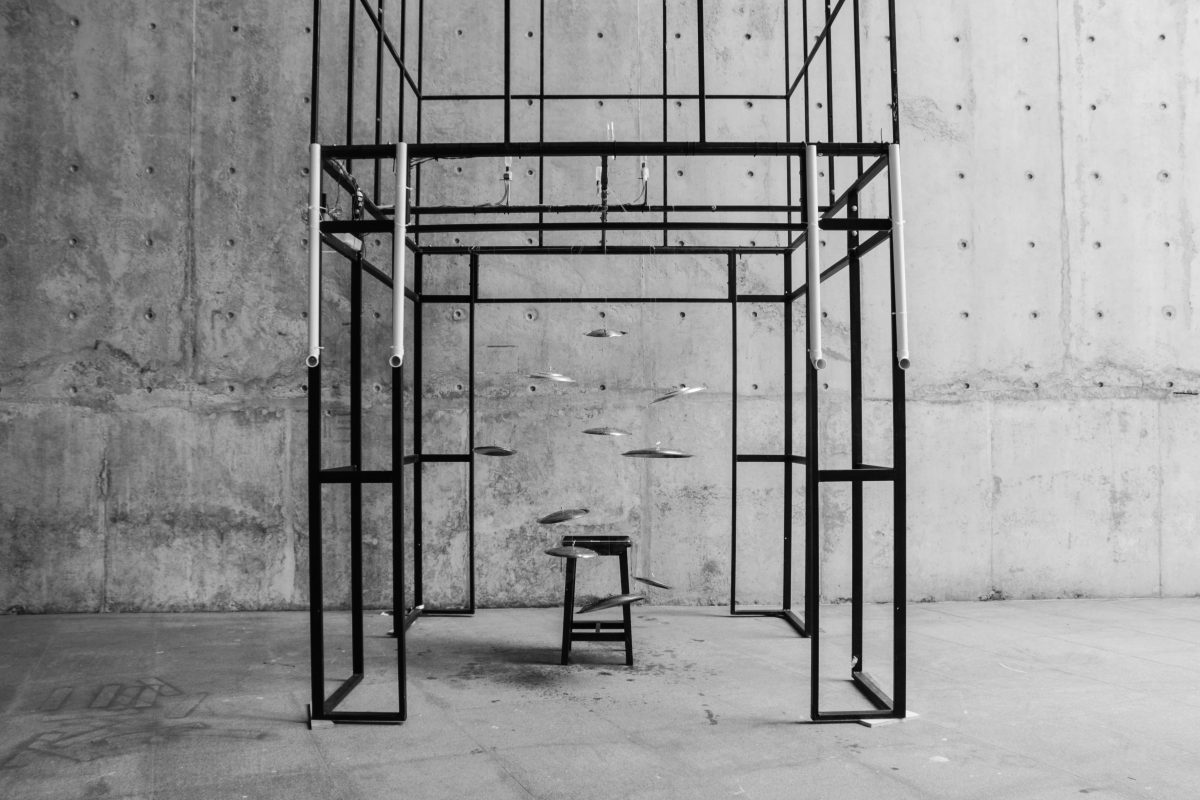
 The challenging part with this was figuring out how to display it such that viewers will know that it is meant for breathing without the use of instructions. We did not want people to resort to using other methods to trigger the sensor as it would remove the poetics of the interaction.
The challenging part with this was figuring out how to display it such that viewers will know that it is meant for breathing without the use of instructions. We did not want people to resort to using other methods to trigger the sensor as it would remove the poetics of the interaction.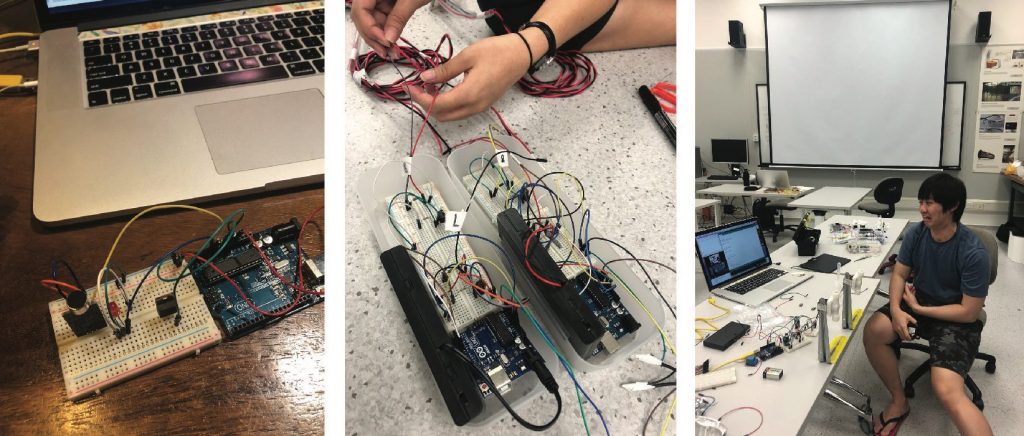 Digital Output
Digital Output
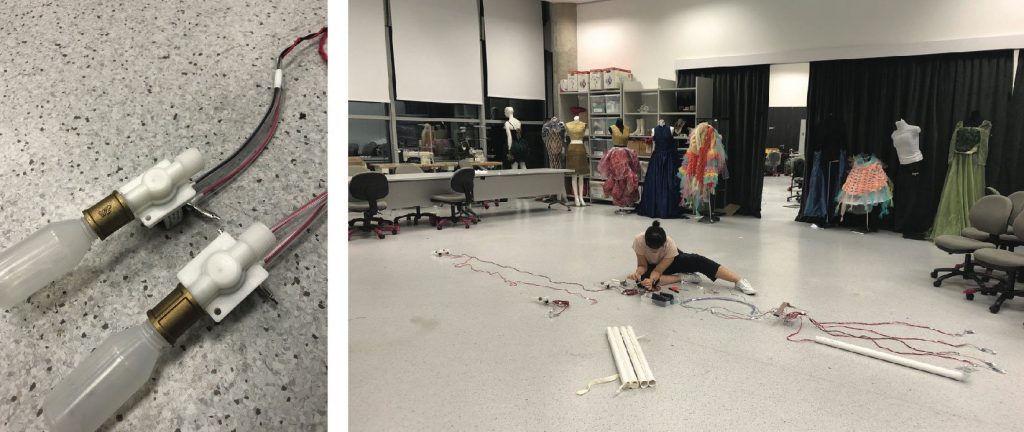
 We made use of the existing metal structure outside ADM for our installation. As the location is outdoors, the suspended lids also tend to react to the natural environment. When a strong wind blows, the lids tend to hit one another, creating a soundscape on its own. With a lighter wind, the lids shift slightly, creating a varied soundscape when interacted with.
We made use of the existing metal structure outside ADM for our installation. As the location is outdoors, the suspended lids also tend to react to the natural environment. When a strong wind blows, the lids tend to hit one another, creating a soundscape on its own. With a lighter wind, the lids shift slightly, creating a varied soundscape when interacted with.
 We also modified the sound that we captured from the surroundings through MaxMSP to recreate the effect of being in the staircase. What was interesting was the added dimension of sound that could also be detected from the environment such as cars passing by, people talking and birds chirping, etc. In this way, the outside space sounds like as one would if they were in the staircase – hence bringing the outdoors, indoors. The reverb effect also made users more aware of the sounds that they made as compared to when they were in the staircase.
We also modified the sound that we captured from the surroundings through MaxMSP to recreate the effect of being in the staircase. What was interesting was the added dimension of sound that could also be detected from the environment such as cars passing by, people talking and birds chirping, etc. In this way, the outside space sounds like as one would if they were in the staircase – hence bringing the outdoors, indoors. The reverb effect also made users more aware of the sounds that they made as compared to when they were in the staircase.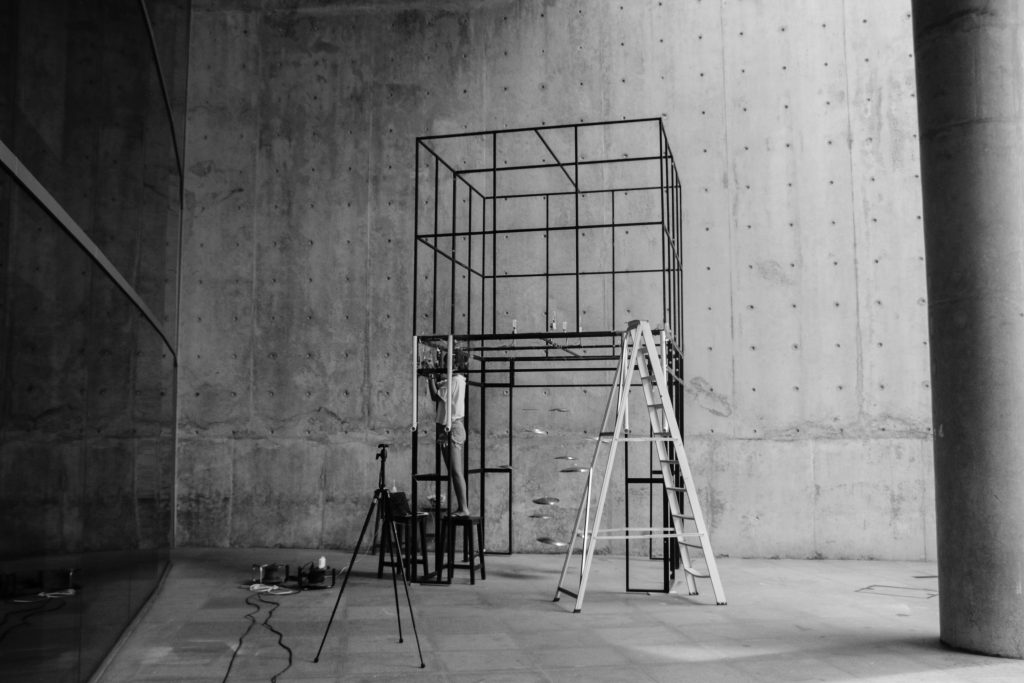
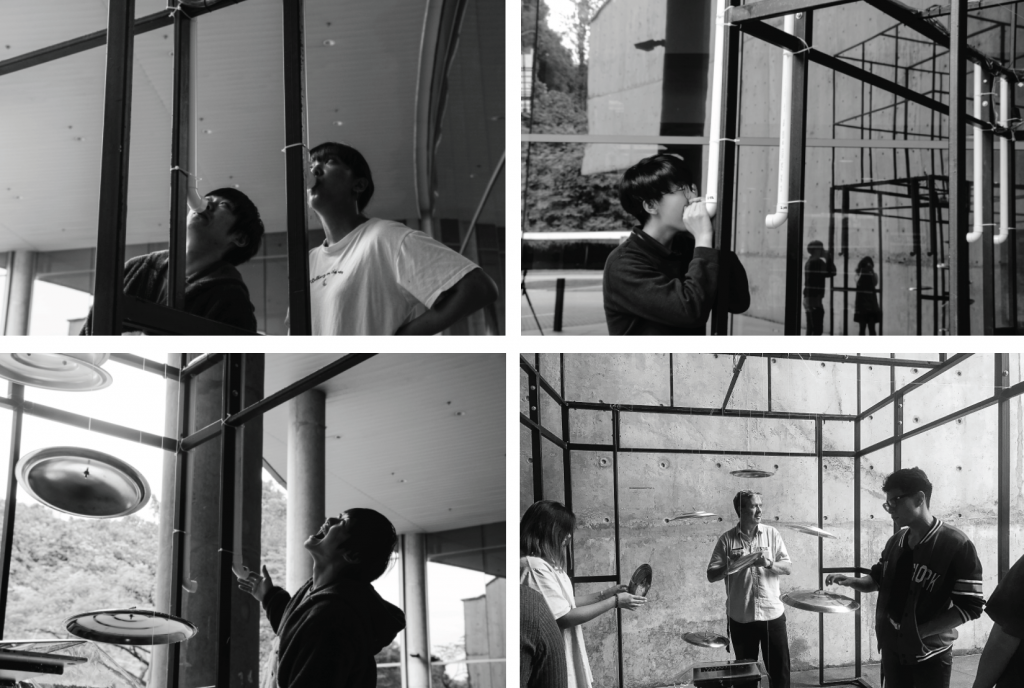
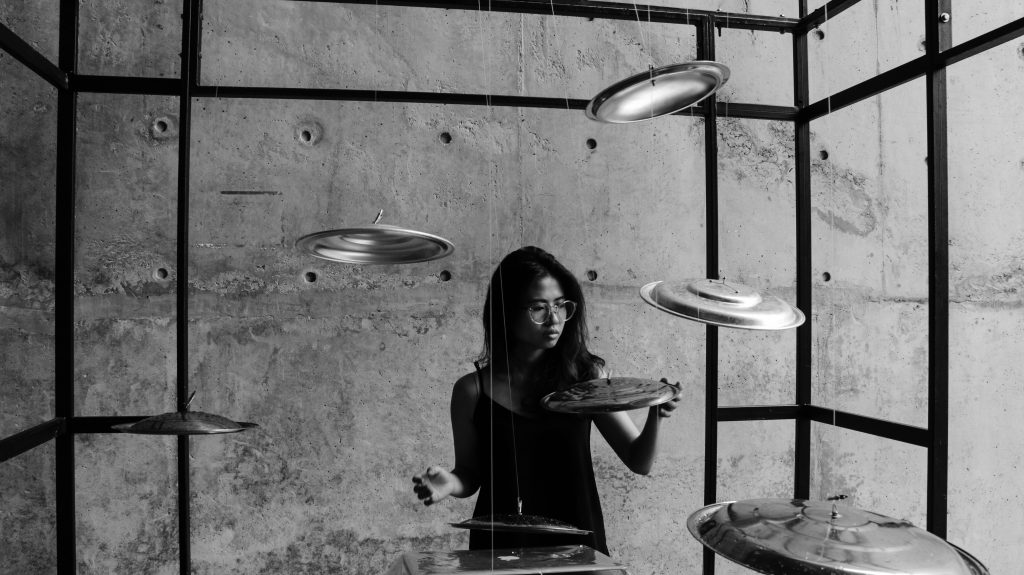




 I drew associations to the one of Wodiczko’s Polish Shoppers (maybe because they were both lone figures on a monumental structure + wearing striped shirts). There are some similarities in both Wodiczko, as well as Varda’s & JR’s work, where they bring these everyday characters to prominence through the scale of their works while revitalising “unused” spaces and surfaces. Their works communicate these stories from the people of the community that we live in, reminding us not to forget that these faces are what makes the place one that we connect and belong to.
I drew associations to the one of Wodiczko’s Polish Shoppers (maybe because they were both lone figures on a monumental structure + wearing striped shirts). There are some similarities in both Wodiczko, as well as Varda’s & JR’s work, where they bring these everyday characters to prominence through the scale of their works while revitalising “unused” spaces and surfaces. Their works communicate these stories from the people of the community that we live in, reminding us not to forget that these faces are what makes the place one that we connect and belong to.

 I thought it would be interesting to represent the turbulent history related to the building & Nantah in abstract textural forms. I created a mood board that shows the visual that I am aiming for: energetic, chaotic and volatile.
I thought it would be interesting to represent the turbulent history related to the building & Nantah in abstract textural forms. I created a mood board that shows the visual that I am aiming for: energetic, chaotic and volatile. Personally, I feel that the concept would work best if it was projected on site as the content relates directly to the context. However, due to practical reasons, I might not be able to project my work directly at the CHC. For proof of concept, I have decided to project on cracks that can be found in ADM. These are some cracks that I observed at the basement level (really wish I could tamper with the crack on the left so that I have more surface to project on), the parts highlighted in red are the areas that I could project onto.
Personally, I feel that the concept would work best if it was projected on site as the content relates directly to the context. However, due to practical reasons, I might not be able to project my work directly at the CHC. For proof of concept, I have decided to project on cracks that can be found in ADM. These are some cracks that I observed at the basement level (really wish I could tamper with the crack on the left so that I have more surface to project on), the parts highlighted in red are the areas that I could project onto. As I will be creating animated content that relies heavily on the movement, texture and material, I have decided to create my content with Cinema 4D. So far I have only tried 3 different types of motion with the help of tutorials, but I have yet to experiment much with creating different kinds of materials.
As I will be creating animated content that relies heavily on the movement, texture and material, I have decided to create my content with Cinema 4D. So far I have only tried 3 different types of motion with the help of tutorials, but I have yet to experiment much with creating different kinds of materials.


 My ideal set up will consist of 1 tiny projector, 2 speakers and a laptop. It would be best if I could somehow hide the equipment so that it doesn’t draw too much attention to the crack that easily, encouraging people to go closer and observe it.
My ideal set up will consist of 1 tiny projector, 2 speakers and a laptop. It would be best if I could somehow hide the equipment so that it doesn’t draw too much attention to the crack that easily, encouraging people to go closer and observe it.